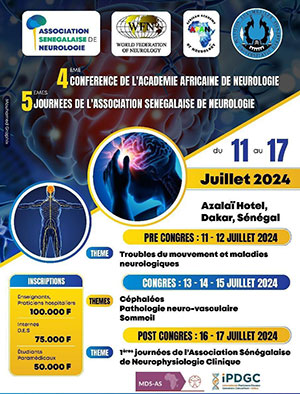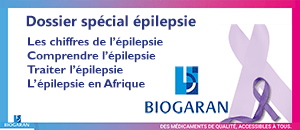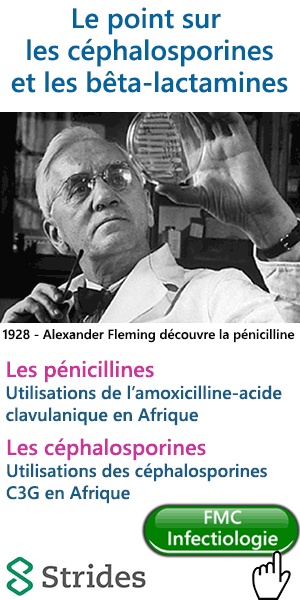← retour Santé tropicale
Accès aux sites pays ![]()
![]() BENIN
BENIN![]() BURKINA FASO
BURKINA FASO![]() CAMEROUN
CAMEROUN![]() CENTRAFRIQUE
CENTRAFRIQUE![]() CONGO
CONGO![]() COTE D'IVOIRE
COTE D'IVOIRE![]() GABON
GABON
![]() GUINEE
GUINEE![]() MADAGASCAR
MADAGASCAR![]() MALI
MALI![]() R.D. CONGO
R.D. CONGO![]() SENEGAL
SENEGAL![]() TOGO
TOGO
← retour Santé tropicale
Accès aux sites pays ![]()
![]() BENIN
BENIN![]() BURKINA FASO
BURKINA FASO![]() CAMEROUN
CAMEROUN![]() CENTRAFRIQUE
CENTRAFRIQUE![]() CONGO
CONGO![]() COTE D'IVOIRE
COTE D'IVOIRE![]() GABON
GABON
![]() GUINEE
GUINEE![]() MADAGASCAR
MADAGASCAR![]() MALI
MALI![]() R.D. CONGO
R.D. CONGO![]() SENEGAL
SENEGAL![]() TOGO
TOGO

Publié dans Médecine d'Afrique Noire 7002 - Février 2023 - pages 77-82
 Accidents d’exposition au sang chez le personnel paramédical et de soutien en service au Centre Hospitalier Universitaire Départemental du Borgou en 2020
Accidents d’exposition au sang chez le personnel paramédical et de soutien en service au Centre Hospitalier Universitaire Départemental du Borgou en 2020Auteurs : A. Alassani, I. Mama Cisse, A.C. Dovonou, A. Wanvoegbe, A. Agbodande - Bénin
Introduction : Les Accidents d’Exposition au Sang (AES) constituent un problème de santé publique chez le personnel soignant et sont sources de plusieurs infections notamment le VIH et les hépatites virales B et C. Le présent travail avait pour objectif d’étudier les AES chez le personnel paramédical et de soutien.
Patients et méthode : Il s’agissait d’une étude transversale et descriptive couvrant la période allant du 15 juin 2020 au 15 septembre 2020 et avait concerné le personnel paramédical et de soutien en service au Centre Hospitalier Universitaire Départemental du Borgou qui avait donné leur consentement. Les variables étudiées étaient la fréquence des AES, les circonstances de survenue des AES, la nature des expositions, les facteurs favorisants les AES et la conduite tenue après les AES. L’analyse des données a été faite par le logiciel Epi data 3.1.
Résultats : Au total, 127 agents de santé avaient participé à l’étude. La moyenne d’âge était de 39,14 ans ± 8,63 ans avec une prédominance féminine (66,93%). Les AES étaient survenus chez 57 agents soit une prévalence de 44,88%. Les circonstances de survenue étaient dominées par la manipulation des produits sanguins (32,79%), l’injection intraveineuse (29,50%) et le ramassage des objets (19,67%). La nature de l’exposition au cours des AES était dominée par les piqûres (64,63%) et les déchirures (15,85%). Le manque de vigilance (59,65%) était le facteur favorisant le plus fréquent. Après la survenue de l’AES, 40,35% des agents avaient fait une déclaration à leur supérieur hiérarchique. Parmi les victimes, 91,23% avaient procédé à un lavage local et 75,44% avaient fait usage d’antiseptiques.
Conclusion : Près de la moitié des agents a été victime au moins une fois d’AES. La plupart des AES ne sont pas déclarés au supérieur hiérarchique. Pour prévenir les AES, il important que tous les agents soient formés.
Introduction: Blood Exposure Accidents (BEA) constitute a public health problem among healthcare personnel and are sources of several infections, in particular HIV and viral hepatitis B and C. The present work aimed to study the BEA among paramedics and support staff.
Patients and method: This was a cross-sectional and descriptive study which covering the period from June 15th, 2020, to September 15th, 2020, and concerned paramedical and support staff in service at the Borgou Departmental University Hospital Center who had given their consent. The variables studied were the frequency of BEAs, the circumstances of occurrence of BEA, the nature of the exposures, the factors favoring BEAs and the conduct followed after the BEA. Data analysis was performed using Epi data 3.1 software.
Results: A total of 127 health workers participated in the study. The average age was 39.14 years ± 8.63 with a female predominance (66.93%). BEA occurred in 57 agents, a prevalence of 44.88%. The circumstances of occurrence were dominated by handling blood products (32.79%), intravenous injection (29.50%) and picking up objects (19.67%). The nature of exposure during BEA was dominated by pitting (64.63%) and tearing (15.85%). Lack of vigilance (59.65%) was the most frequent contributing factor. After the occurrence of the BEA, 40.35% of the agents had made a declaration to their hierarchical superior. Among the victims, 91.23% had carried out local washing and 75.44% had used antiseptic.
Conclusion: Nearly half of the agents have been victims of BEA at least once. Most BEA are not declared to the line manager. To prevent BEA, it is important that all agents are trained.
Cet article est actuellement coté ![]() (1,0 étoiles) par les abonnés de Médecine d'Afrique Noire.
(1,0 étoiles) par les abonnés de Médecine d'Afrique Noire.
Il a été consulté 5221 fois, téléchargé 3 fois et évalué 1 fois.
Aucun commentaire n'a encore été ajouté à propos de cet article
Restez informés : recevez, chaque mercredi, la revue de presse de Santé tropicale. Inscriptions


Ce contenu gratuit vous est destiné :







![]() Adresse
Adresse
![]() Téléphone
Téléphone
![]() Contactez-nous
Contactez-nous
Actualités
Articles médicaux